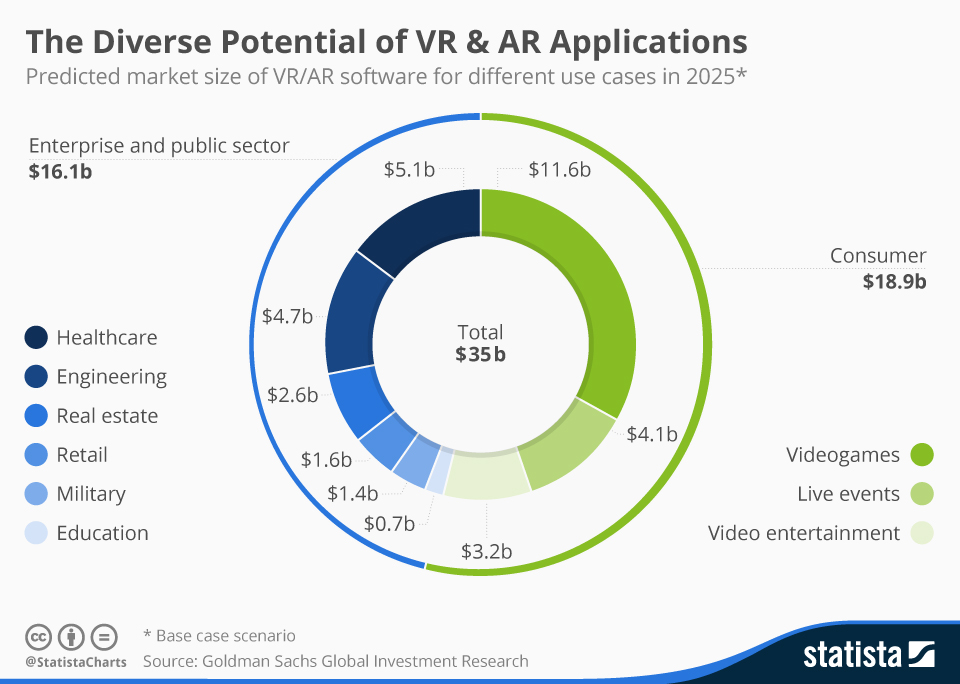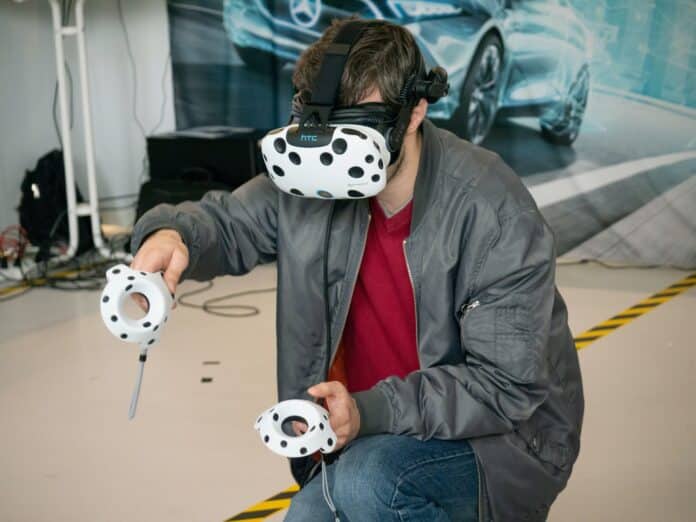Augmented reality and virtual reality have taken strides of improvements from their origins. In the beginning, it was hard to distinguish what these two technologies could be used for and how they could be incorporated into our everyday lives.
However, today we have seen both VR and AR take technology to new heights while being incorporated into existing technologies to create new experiences. One of the industries these two technologies have impacted is gaming.
VR headsets have helped to take gaming from a 2D experience to a 3D adventure by letting players feel fully immersed into a new environment thanks to headsets. AR has helped where players can see characters from their games in their very own natural life setting. For example, Pokemon Go is an excellent example of AR technology in gaming.
(Source: Statista)
The diagram above indicates VR and AR potential in some of the world’s biggest markets. We have already talked about how both technologies can be used in gaming, but they both have huge potential further afield. They can transform healthcare and education to create more prosperous care and learning experiences. Before we consider recent developments in both technologies, it would be used to understand what they are and how they are different.
Augmented reality
Augmented reality is an interactive experience provided to the user based on their real-world environment. Objects that reside in the real world are enhanced by computer-generated perceptual information. This allows objects and things from the virtual world to be placed in the real world, which can be viewed through smartphones and devices. The intelligence of technology paired with multi-sensor targets allows us to enjoy visual and audio components in current environments.
Already, some of the newest smartphones like the Samsung come packed with AR features. For example, recently, Samsung announced a release of Smarttags and finders, which are location trackers that are designed to find essential items like keys and wallets.
Virtual reality
Virtual reality is a simulated experience that is usually enjoyed through a headset. The experience can be programmed to be the same as the environment the user is in but, in most cases, is entirely different from the real world. Computers can generate three-dimensional images that can be interacted with via handheld gimbals, which have specific commands to carry out tasks in the VR world.
The difference between the two is quite apparent in the way that one manipulates the natural world and the other extracts users from the real world into a computer-generated world, and how we access them is different.
New developments
Researchers have developed software and hardware achievements that could make holography feasible for a wide range of applications such as VR and AR experiences. This has created a new approach that essentially improves image quality and contracts for holographic displays. The new technology has the potential to enhance near-eye displays used in VR and AR.
The new technology is called Michealson holography and can overcome some of the biggest challenges that remain in improving these systems for user experiences enabling them to have a transformative impact on society as a whole.
The new approach combines a unique optical setup that generates interference patterns necessary for making digital holograms. This new approach has the strength to outperform other 3D display technologies that are used for VR and AR by increasing complacent displays and increasing user’s abilities, such as focusing their sight on different distances.
New age uses for AR and VR
Recent developments in the world of AR and VR bring with it new opportunities. Academic institutions are now looking into new types of technologies that can help enrich learning experiences for students of all levels.
When considering training to become a surgeon or thinking about engineering and architecture, AR and VR can transform these fields of study, creating a new workforce of people who are better built to deal with real-world situations. The training and education received with these new technologies generate a richer work pool of individuals. This can also mean less money spent on equipment for universities.
As we move towards a world that is connected by smart devices, it only seems fitting that education and most other industries will also begin to steer in that direction. When we consider the amount of information available online at our fingertips and how far technology can come from 2000, it’s exciting to see what the next ten years of technological enactments will hold for the world.
PLEASE SUPPORT US FOR JUST £2 A MONTH







